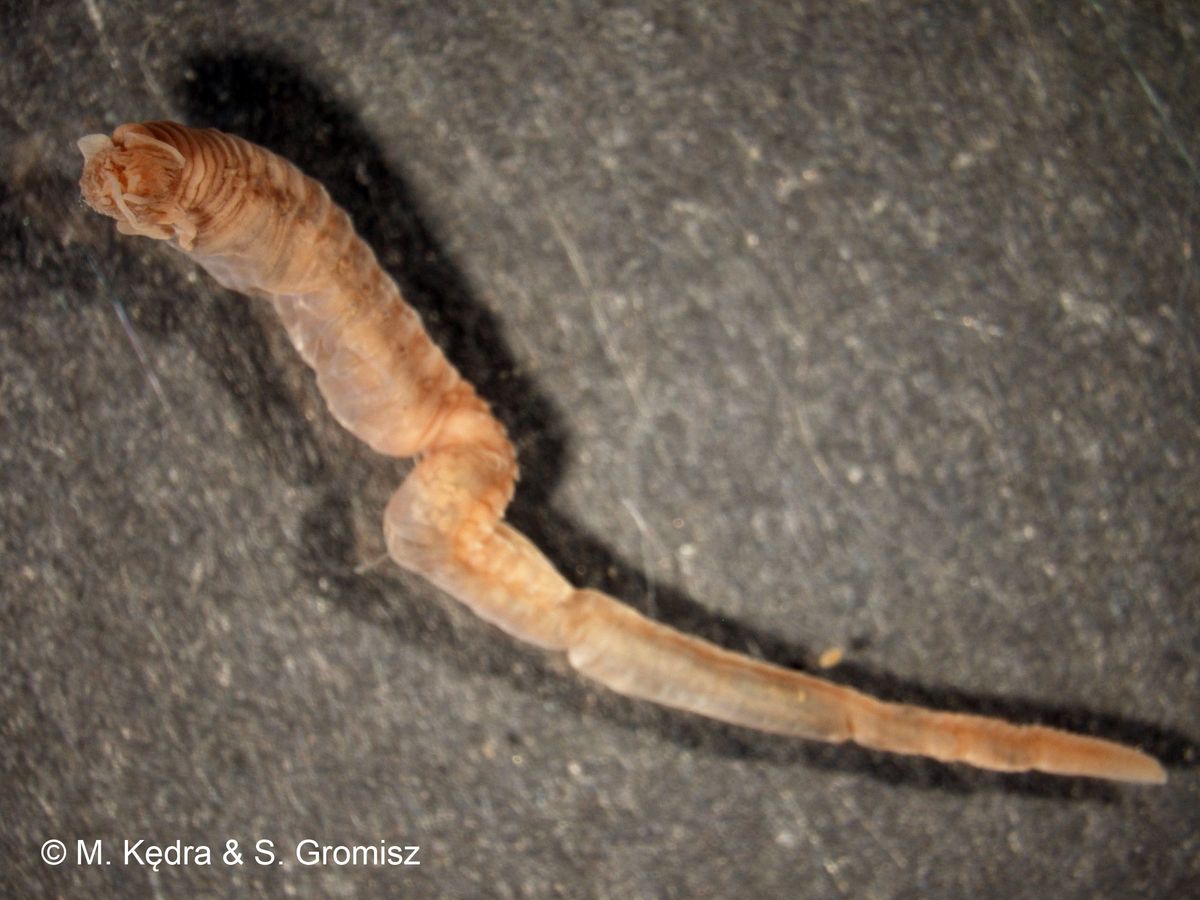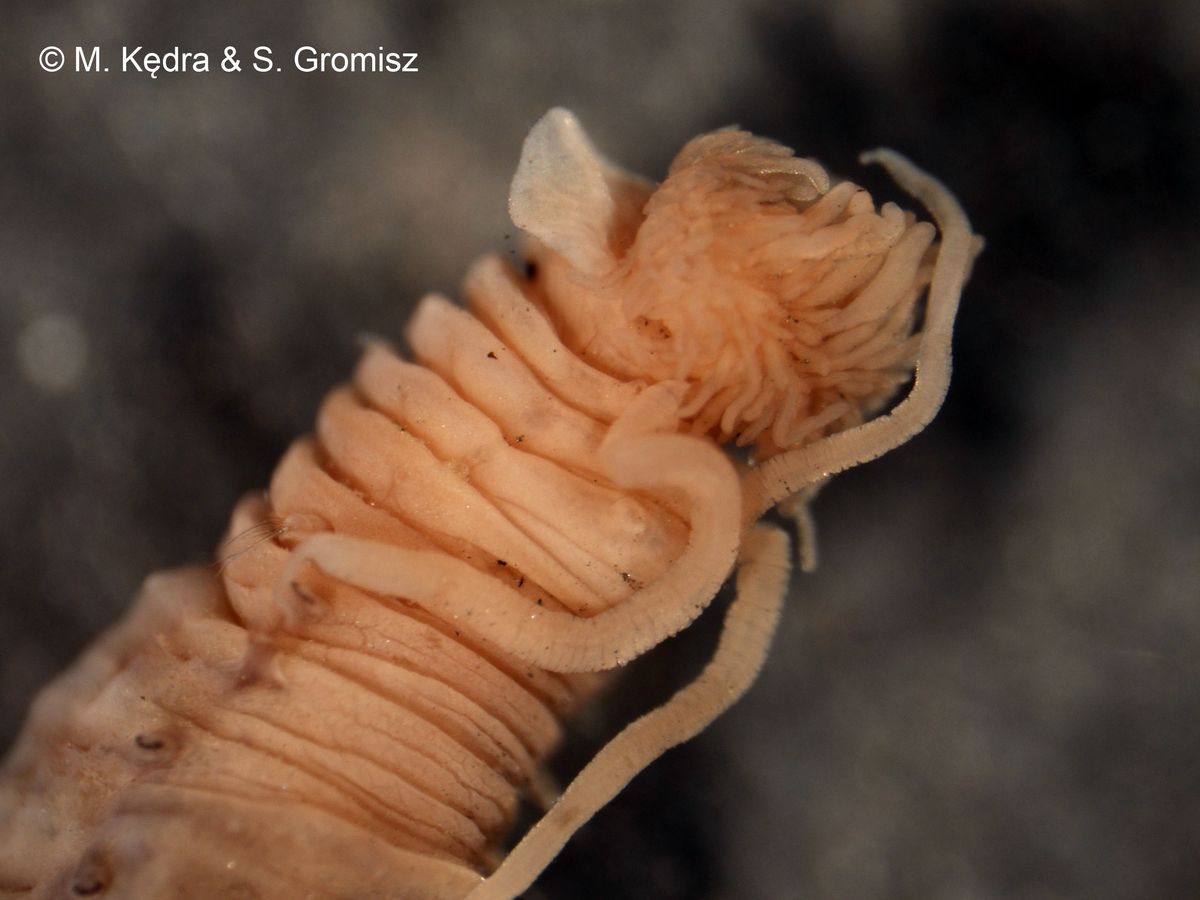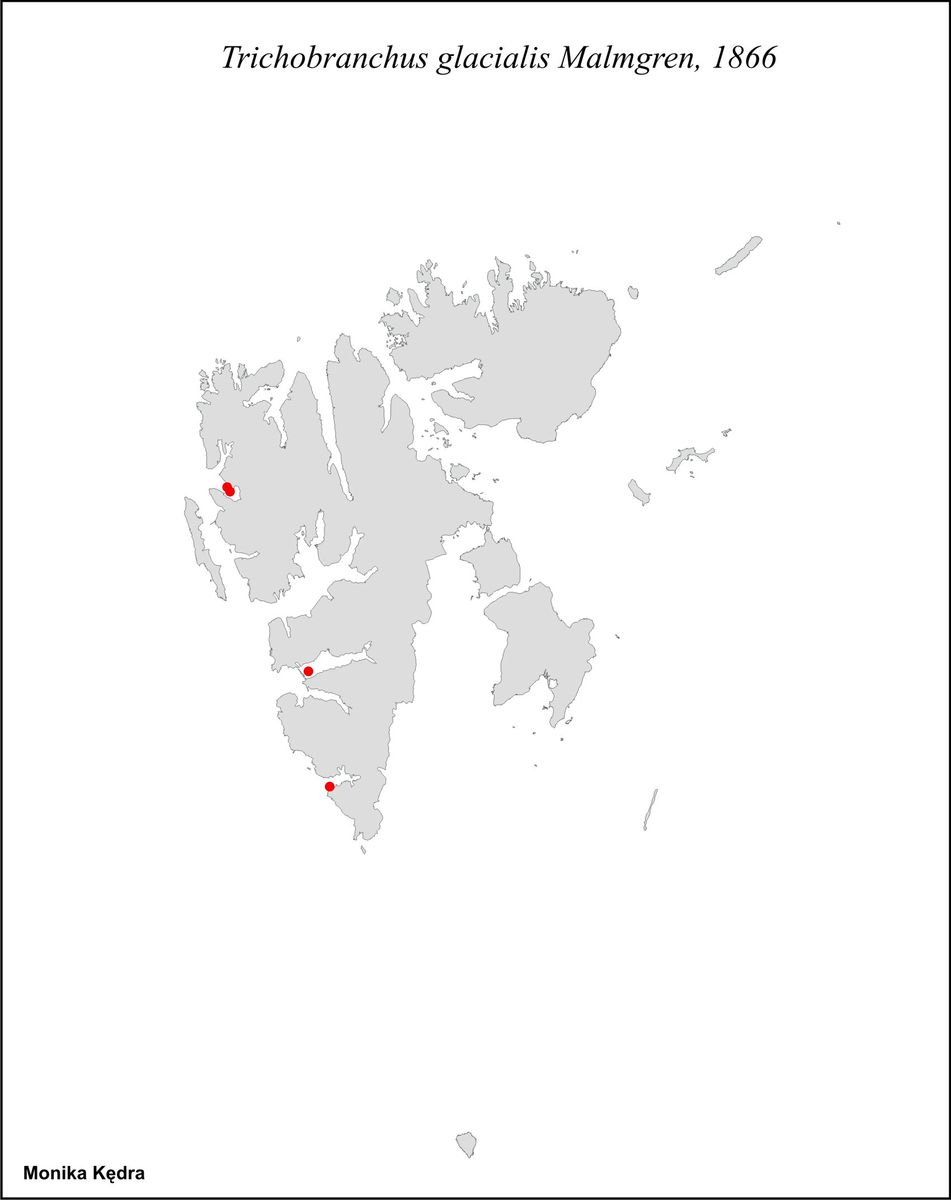Trichobranchus glacialis Malmgren, 1866

|

|

|
Trichobranchus massiliensis Marion,1876
Distinguishing characteristics
Three pairs of filiform branchiae.
Pair of large lobes on buccal segment.
Two types of short tentacles (thick forrowed and thin cylindrical).
Species description
Body relatively short, thorax cylindrical, abdomen tapering. Tentacles numerous and short, comprised of thick furrowed ones, and thin cylindrical ones. Buccal segment laterally with a pair of large, rounded, thin and flexible lobes, ventrally cushionlike. Three pairs of simple filliform branchiae on segments 2-4. 15 chatigerous thoracic segments. Notochaetae from segment 4. Uncinigerous tori from segment 6, low, short on anterior part of thorax, long on posterior part of thorax, and again short on abdomen. Thoracic uncini with long shafts. Pygidium with smooth or weakly crenulate edge. Tube - A thin layer of secretion incrusted with mud and sand, often fastened to algae or stones.
Size
Up to 30 mm for 70 segments.
Color
Alive: orange with violet tentacles and red branchiae. In alcohol whitish.
Habitat
On mud, sand and mixed bottoms; uppermost sublittoral to depths exceeding 2500 m. Salinity range euhaline.
Mobility
Sedentary.
Feeding
Surface deposit feeder.
Life cycle
Distribution
Eastern North Atlantic to Liberia, Mediterranean, western North Atlantic, Greenland, Novaya Zemlya, Kara Sea, Alaskan Arctic, Bering Sea, North Pacific, East and South Africa, southern South America, Subantarctic Islands, Antarctic waters, Svalbard, Iceland, the Faeroes, Shetland, western and southern Norway, eastern Great Britain, Skagerrak, Kattegat, Swedish west coast.

